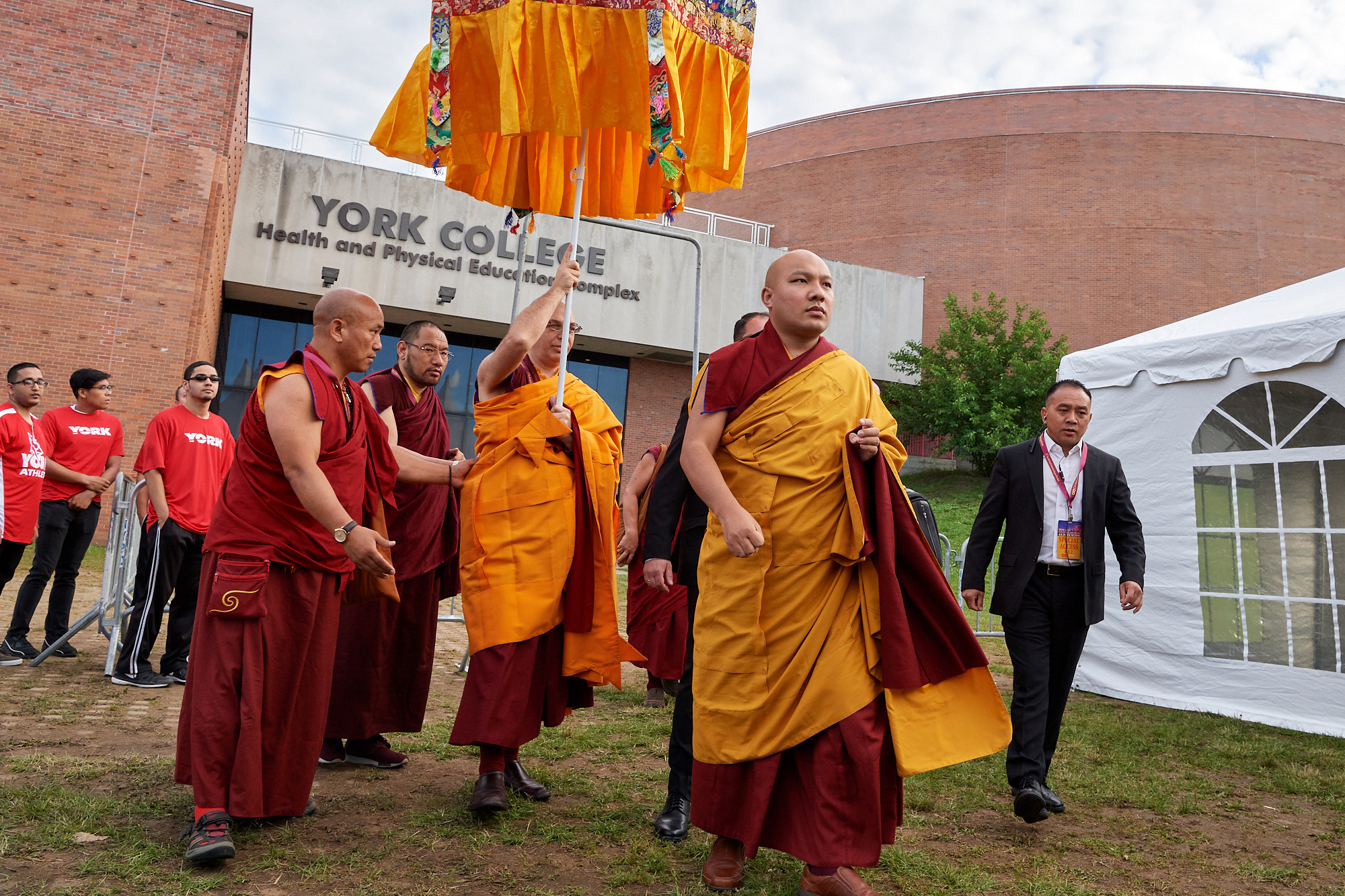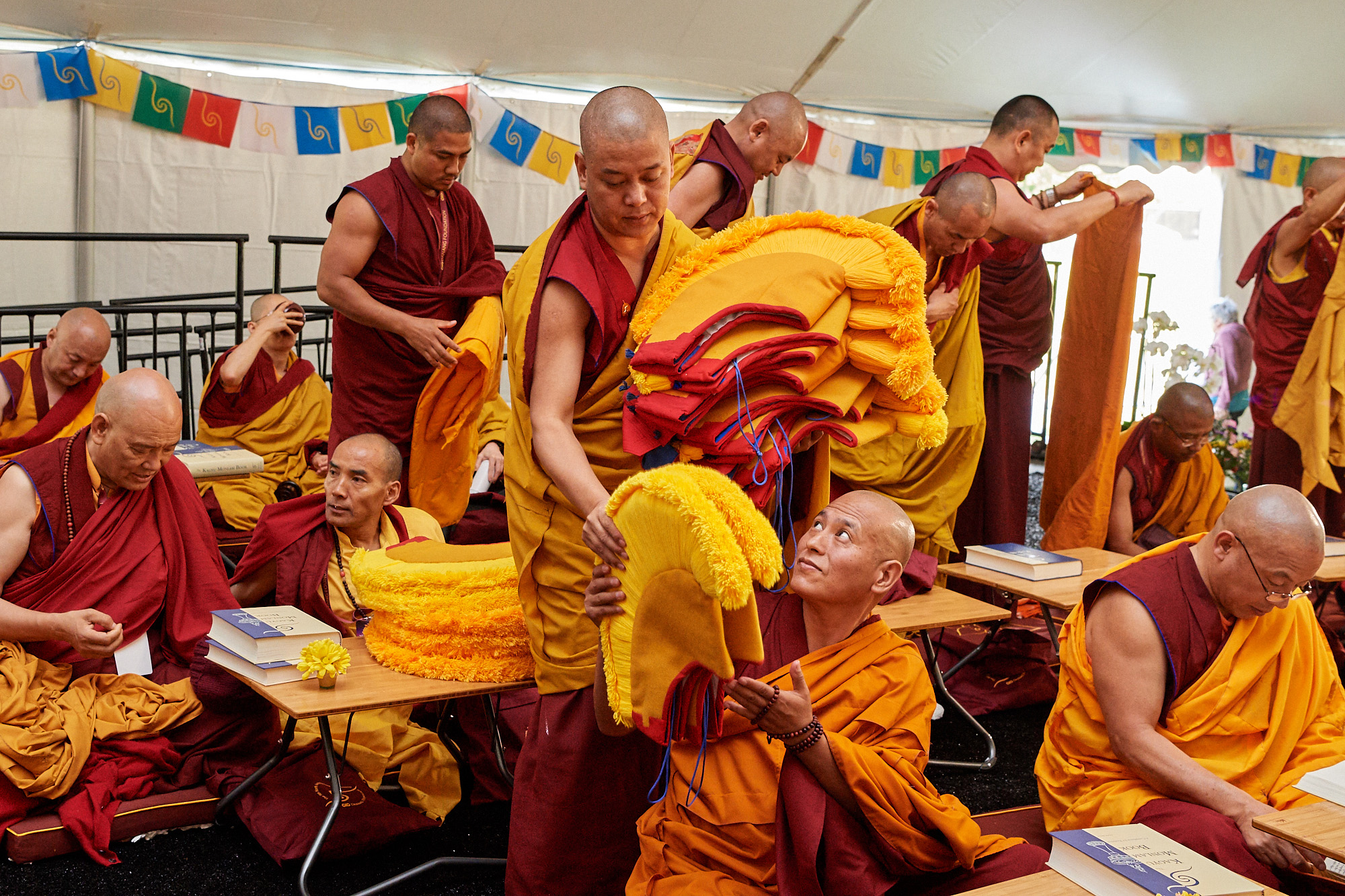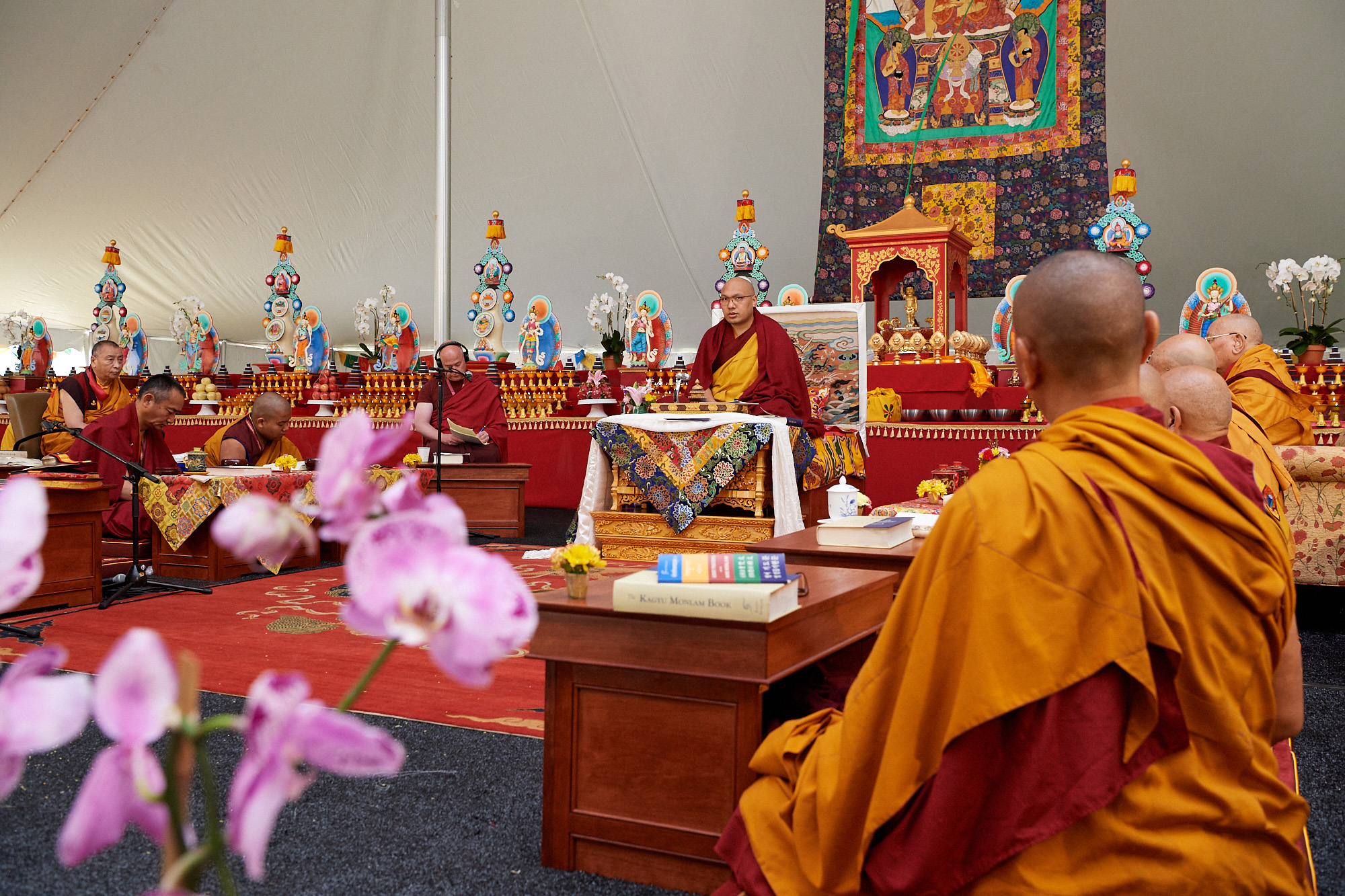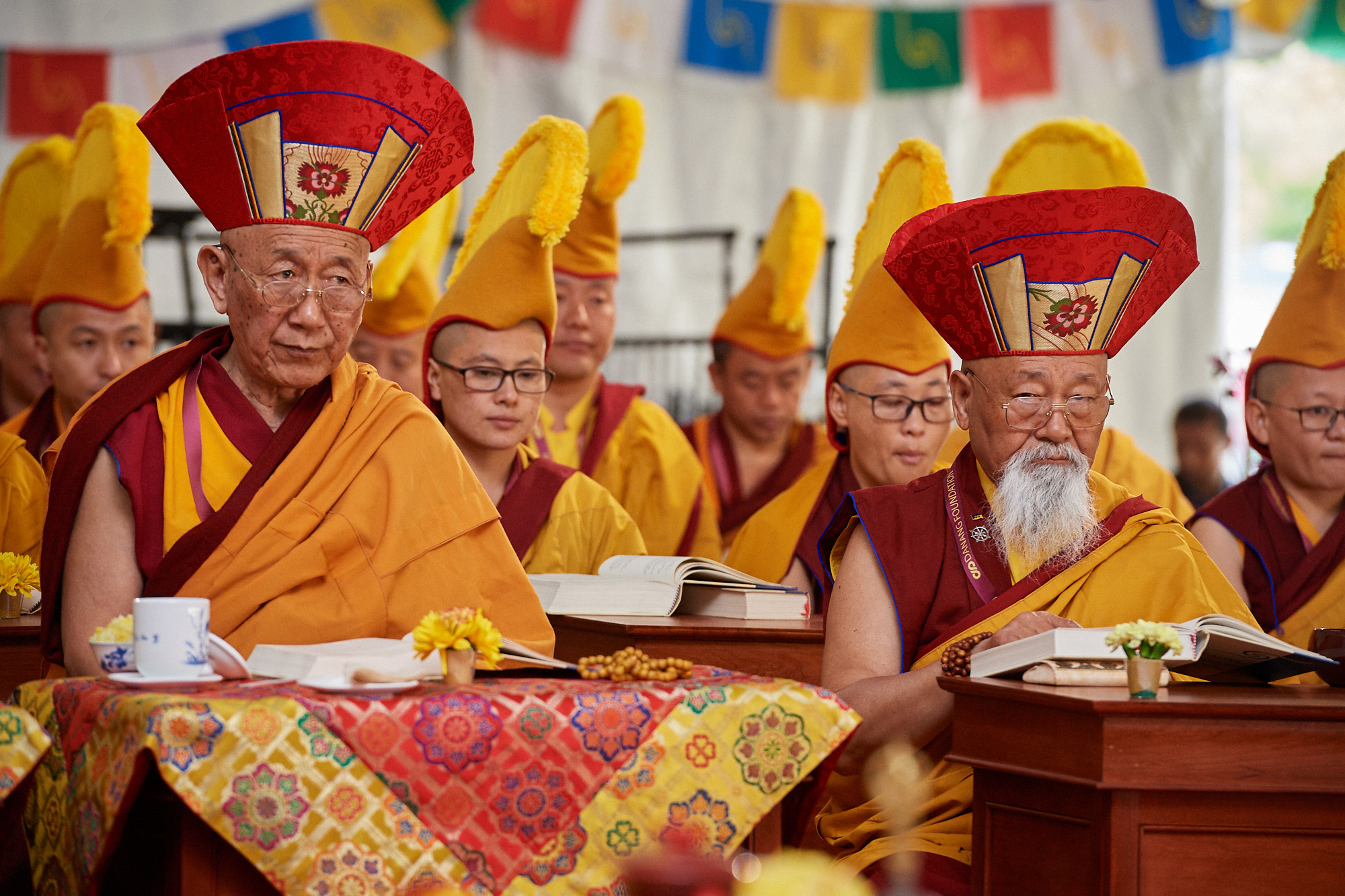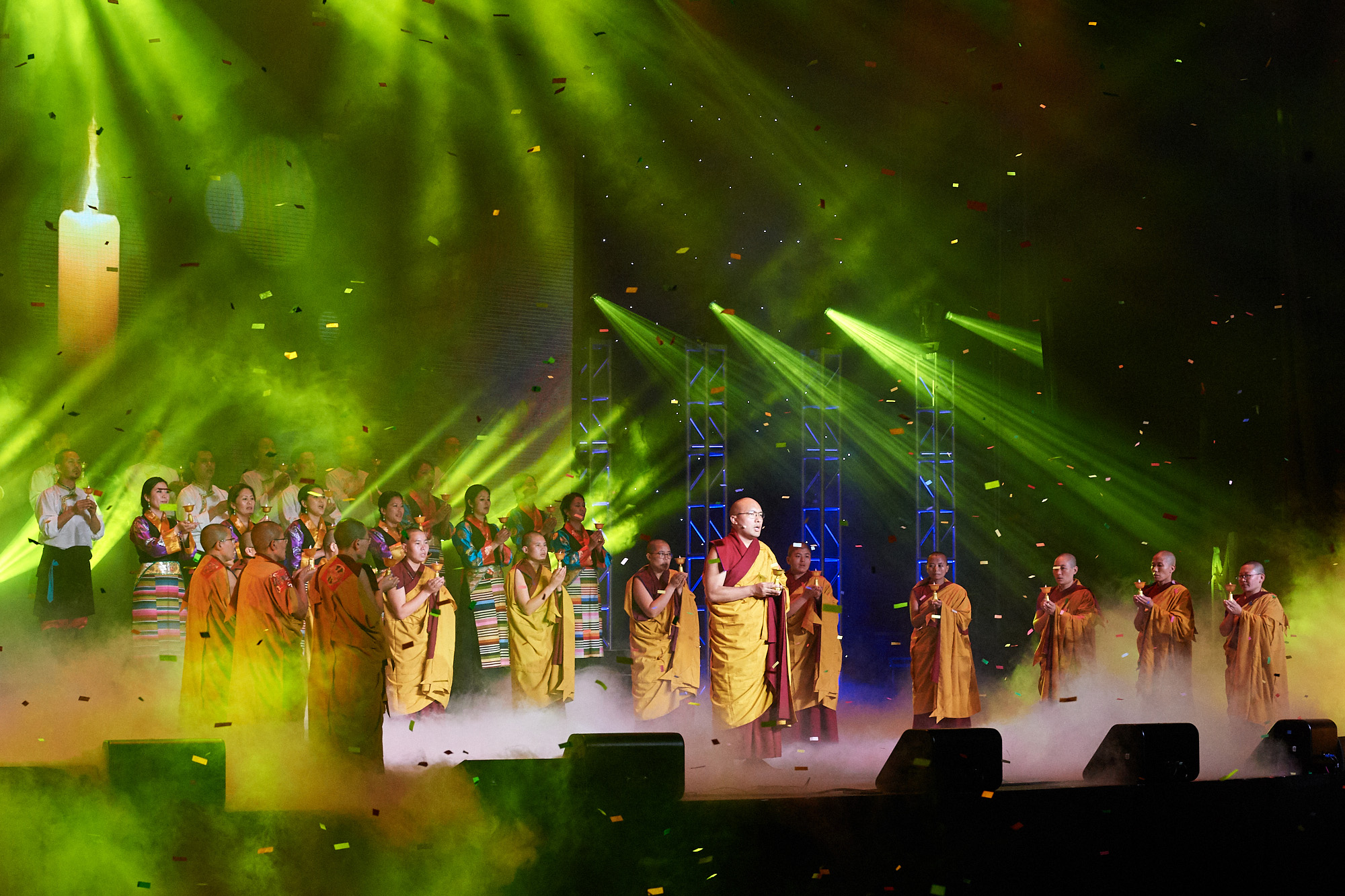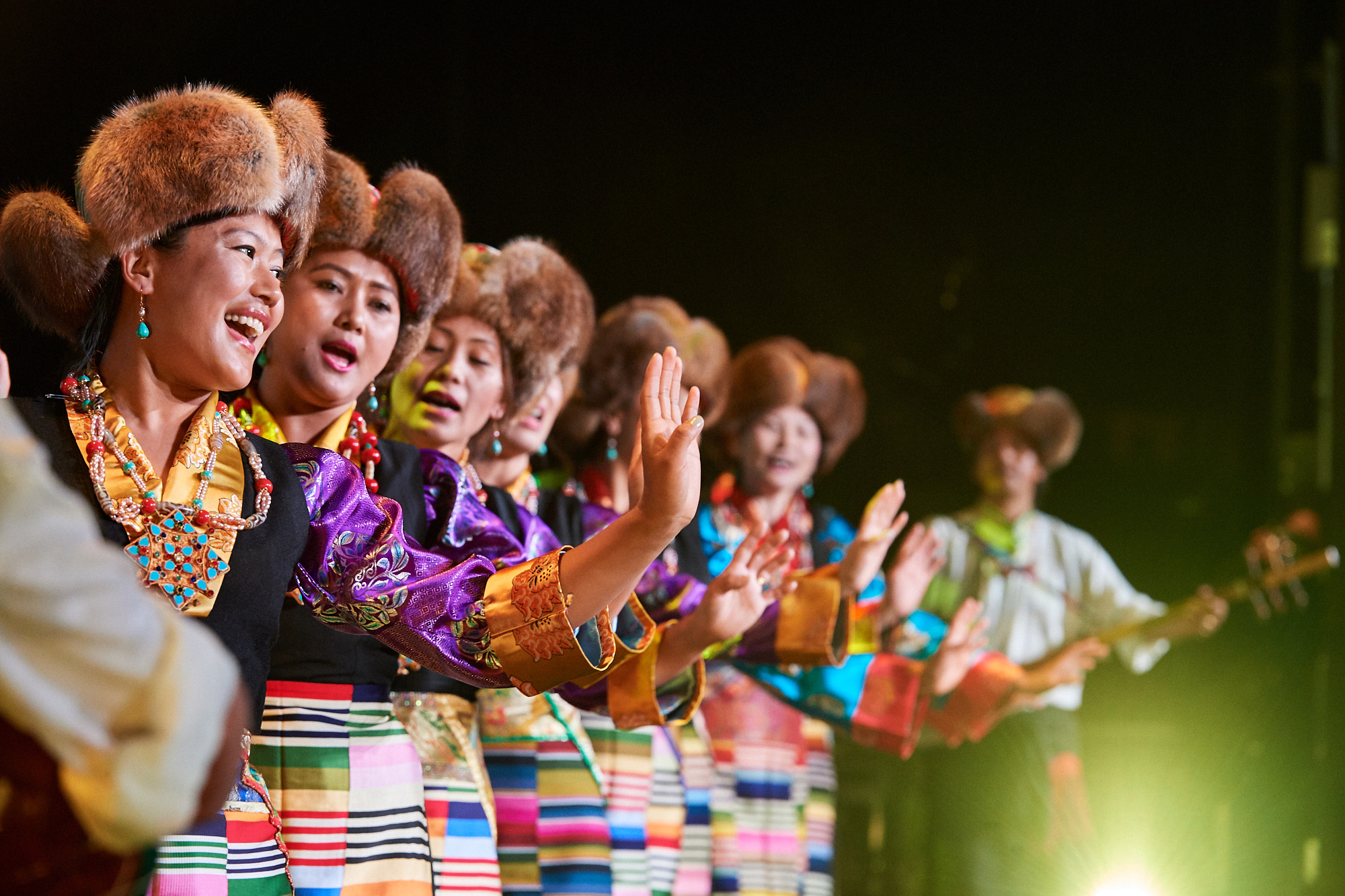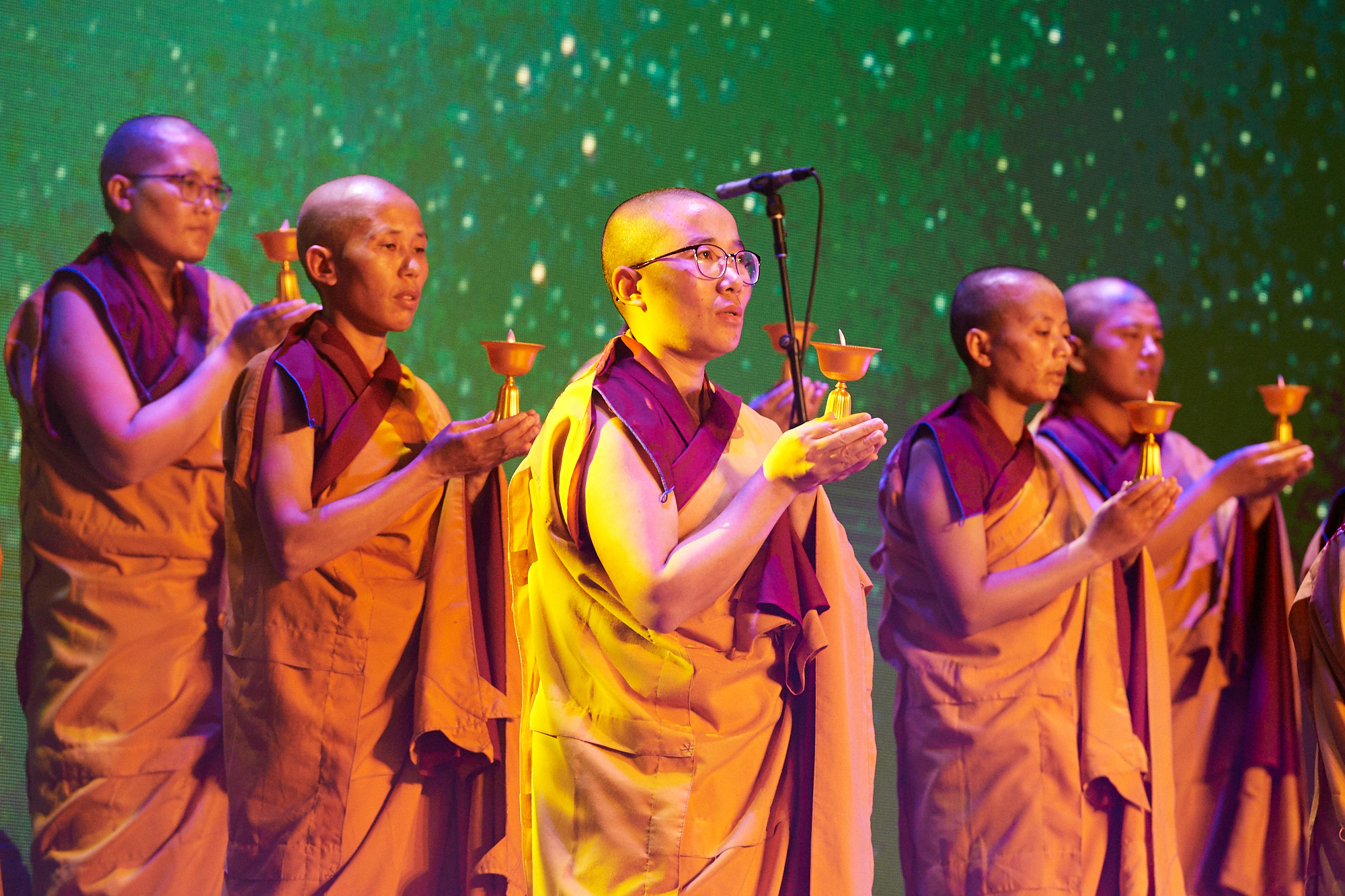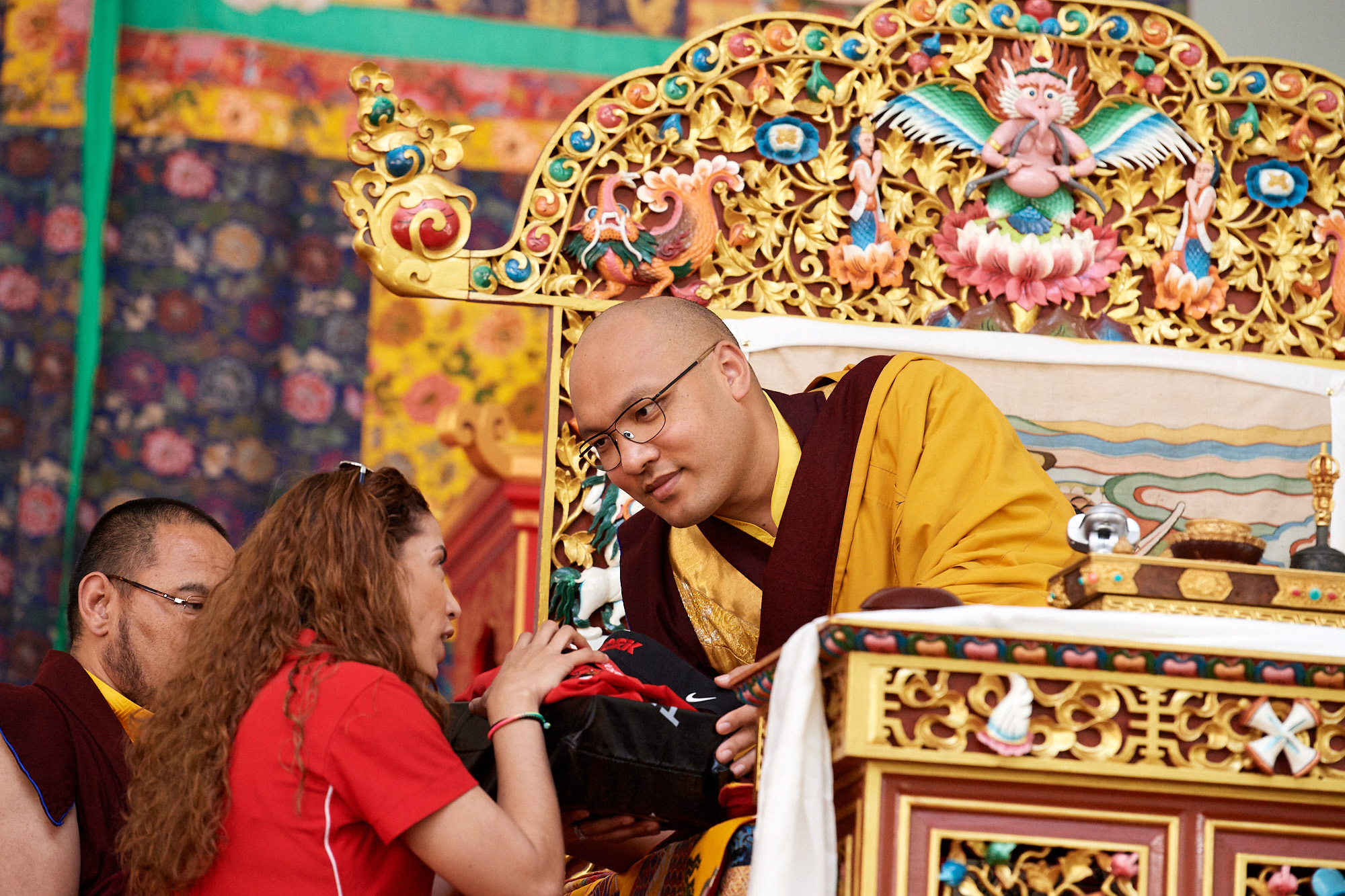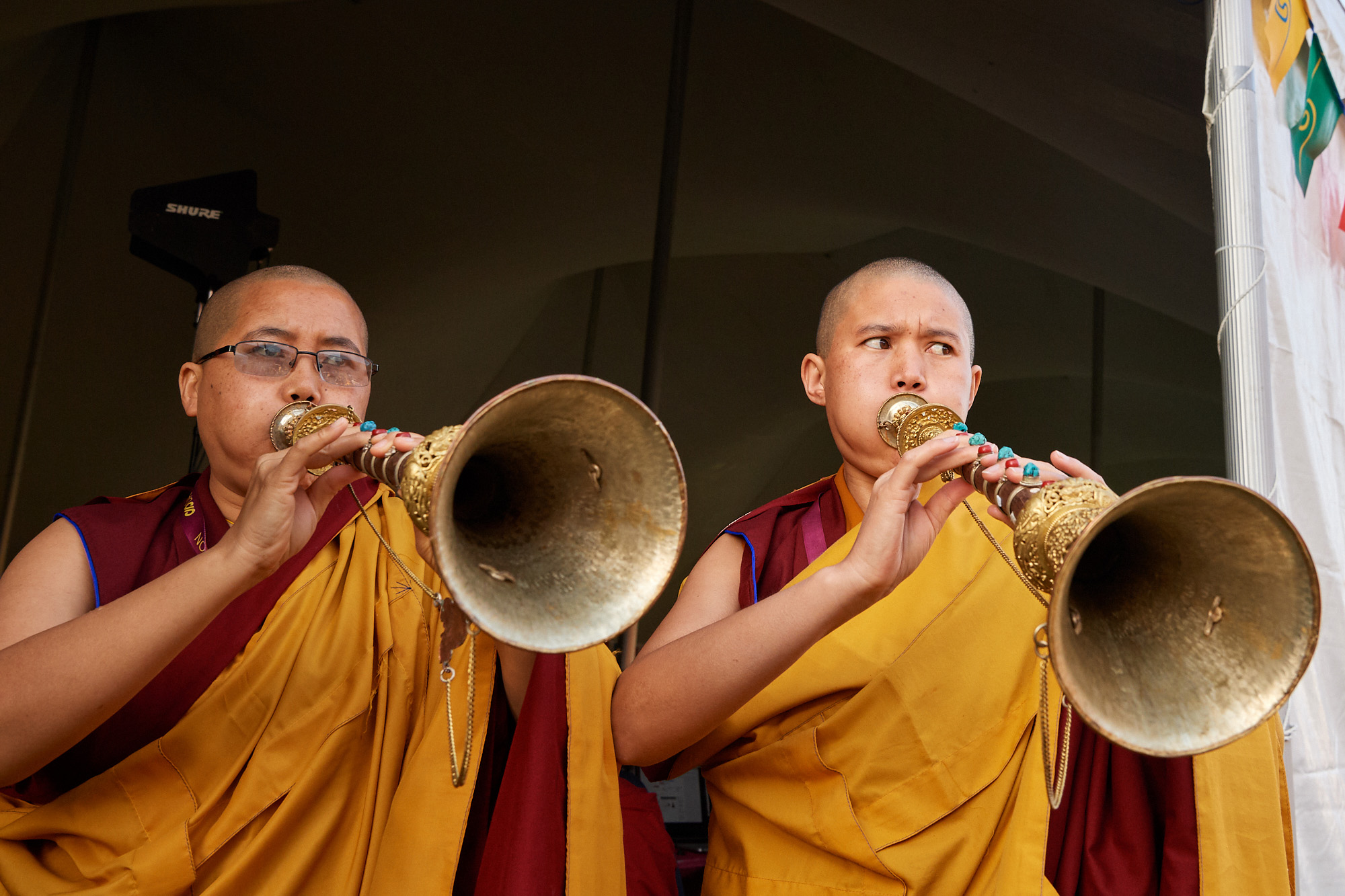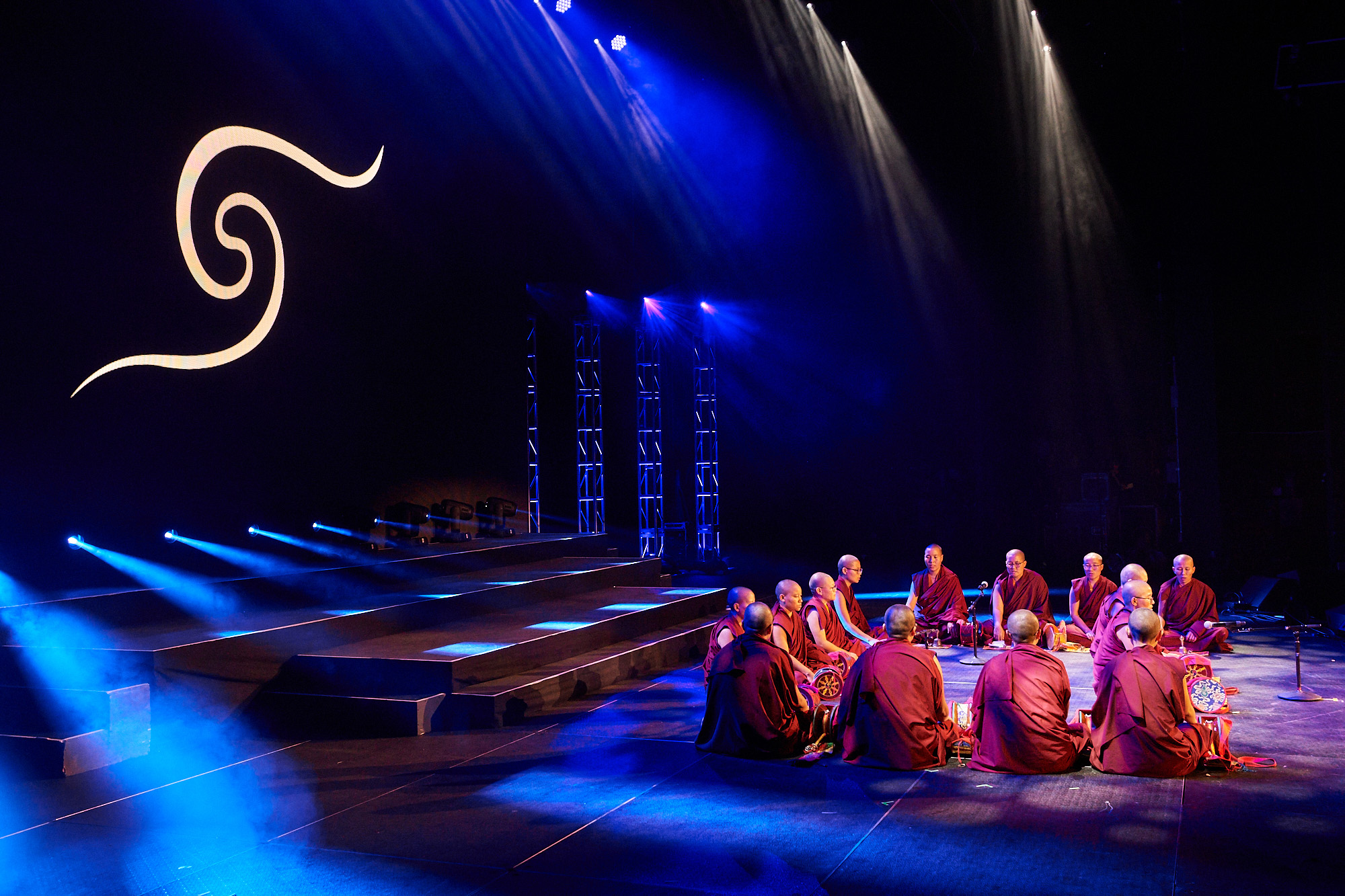Ogyen Trinley Dorje, one of two claimants to the title of the 17th Karmapa, presided over the ninth North American Kagyu Monlam on June 6–9 in New York City, the first time the prominent Buddhist leader has led the Tibetan Buddhist prayer festival outside of India. The Karmapa—the head of the Karma Kagyu lineage and one of the most important spiritual leaders in Tibetan Buddhism—shook things up at the Queens event, placing women in leadership roles they’ve never been allowed to hold and revealing that he is working to bridge a sectarian divide that has vexed his school.
Each winter, thousands attend the annual Kagyu Monlam in Bodhgaya, India, to chant and pray for world peace as well as receive teachings and empowerments, and over the past 15 years the Kagyu school has established satellite monlams for adherents across the globe. Due to health issues, Karmapa Ogyen Trinley Dorje was absent from the 35th Kagyu Monlam in March this year, the first time he has missed the Bodhgaya-based monlam since he began presiding over it in 2001. He has been temporarily living in the United States since October 2017 for medical care and rest.

When asked about his health during an interview at the Queens monlam on June 8, the Karmapa told Tricycle, “I’m OK. It’s not always very good, but not bad.”
“I’m still alive,” he added with a chuckle.
The monlam, hosted by the Danang Foundation at York College and attended by an estimated crowd of 1,200 laypeople and monastics from around the world, came at an interesting time in the Kagyu school. In March, the Karmapa delivered a special message to the 35th Kagyu Monlam via video in which he opened up about his personal struggles to fulfill his leadership responsibilities and his wish to resolve the sectarian split in the Karma Kagyu school. The divide dates to the period after the 16th Karmapa’s death in 1981, when some lamas identified Ogyen Trinley Dorje as the 17th Karmapa and others recognized Karmapa Trinley Thaye Dorje, resulting in bitter quarreling and even lawsuits.
Karmapa Ogyen Trinley Dorje told Tricycle that he felt it was the right time to talk about the issue and that there “needs to be leadership,” continuing, “I suppose in a sense I would have felt unable to make such frank remarks about this had I been in Bodhgaya . . . somehow I found it easier to speak about this from here.”
When asked about addressing the sectarian dispute, he said, “I am in the process of enacting plans to resolve this. But because these processes or plans are not completed yet, I don’t want to be too specific. The point is everyone needs to work together. Now, I take responsibility. But I can’t do this entirely alone. I need both sides to come together.”
Related: Karmapa Ogyen Trinley Dorje Calls for Community Reevaluation
The Queens monlam made history in other ways, too. The Karmapa selected three nuns to be the first women to hold the key roles of umzay, or chant leaders, a decision consistent with his focus on gender equality within the Tibetan Buddhist tradition and nuns’ education and empowerment. The 2018 Kagyu Monlam in Bodhgaya featured both monks and nuns as chant leaders, but this was the first monlam in the Karma Kagyu lineage where all the chant leaders were women. Karmapa Ogyen Trinley Dorje told Tricycle, “[This monlam] is very special because . . . we’ve brought 14 Bhutanese nuns,” three of whom were the chant leaders. The nuns also performed on June 10 at the Marme Monlam, a musical show and lantern ceremony for peace attended by approximately 2,500 people at Madison Square Garden, where they chanted a song by the beloved Tibetan saint Milarepa and performed a short chöd ritual [tantric ego-cutting practice]. The Karmapa said in the past that nuns could only be chant leaders in their nunneries, but “now [the nuns] are upgrading.” He continued, “It’s important to provide opportunities for them to increase their confidence and especially opportunities for female monastics to assume leadership positions.”
Michele Martin, a longtime translator for the Karmapa, said that the Karmapa has been steadily elevating nuns to roles they have previously been barred from, including lama dancers and co-umzays at the Bodhgaya Monlam. “He’s been kind of moving it gradually, so that people can slowly accept the nuns coming up and their new positions,” she said. “They’ve just done a fantastic job. They have hardly missed a syllable.”
The head chant leader, Tsunma Khyechok Palmo, was helped by assistant chant leaders Tsunma Kuenga Drolma and Tsunma Tsultrim Drolma, all from Karma Drubdey Nunnery in central Bhutan. Khyechok Palmo had been one of the chant leaders at the 35th Kagyu Monlam in Bodhgaya earlier this year. Of her first visit to the United States, she said, “It is good to be here practicing with the Western people. I am enjoying it. We all share the same one universe.”
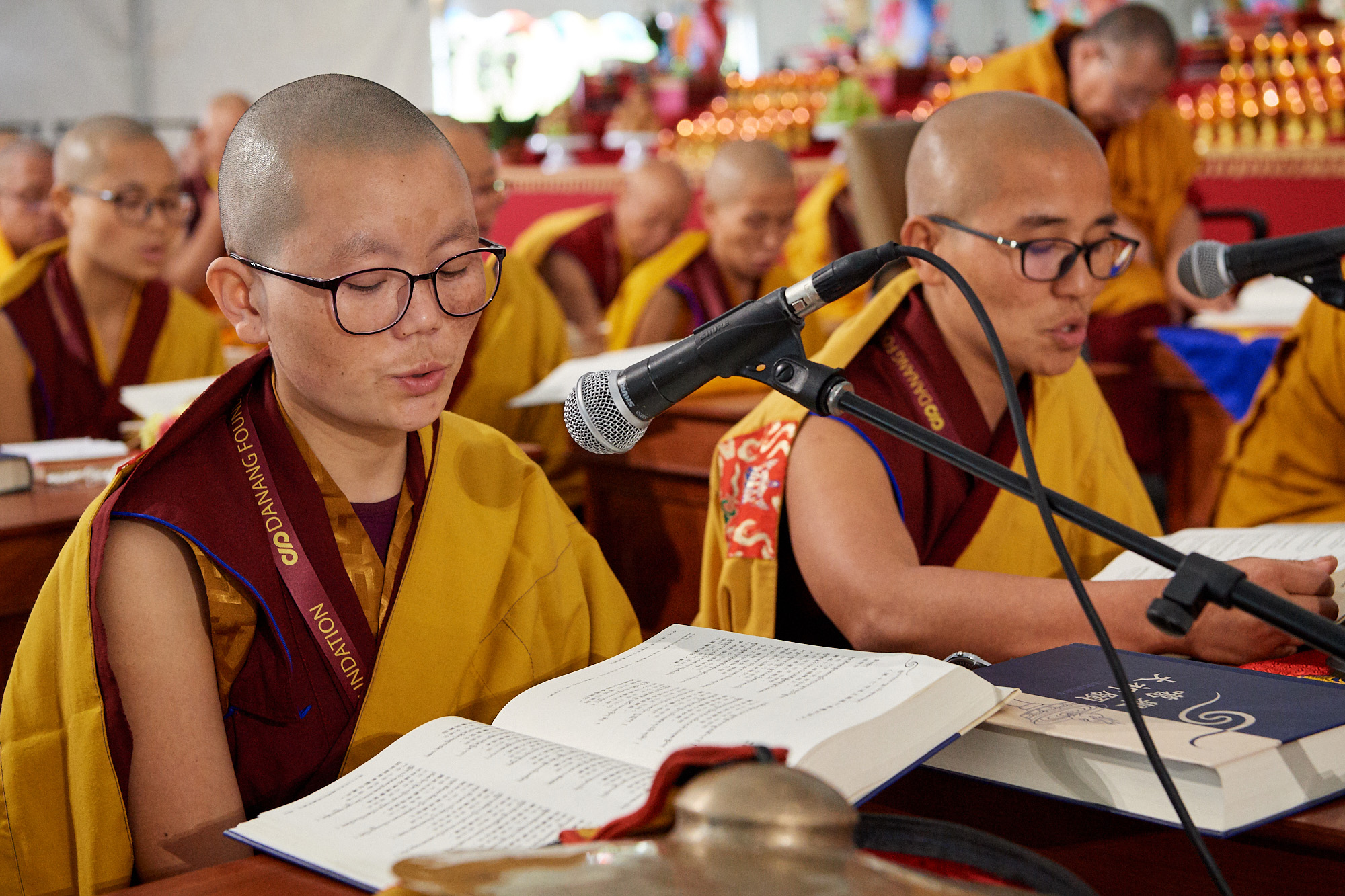
Related: Recently, Under the Bodhi Tree
The monlam also focused on social responsibility. Excess food that was not served to attendees was donated to a local Queens food bank, organizers said. The Karmapa has made protection of the environment one of his signature issues, and in keeping with his work on that topic, all plates, cups, and flatware were biodegradable, only vegetarian food was served, and the theme of one segment of the Marme Monlam show was “The Power of Nature.”
The New York monlam was similar to its Indian counterpart, but with some distinctive American influences. Tibetan and American children played together in fields outside the tent, and the sound of Tibetan chanting was occasionally punctuated by pop music blasting from a passing car or the wail of police and ambulance sirens. About 30 New York Police Department officers stationed around the area for security were offered cups of chai tea along with participants and posed for a photo with the Karmapa at the end of the monlam.
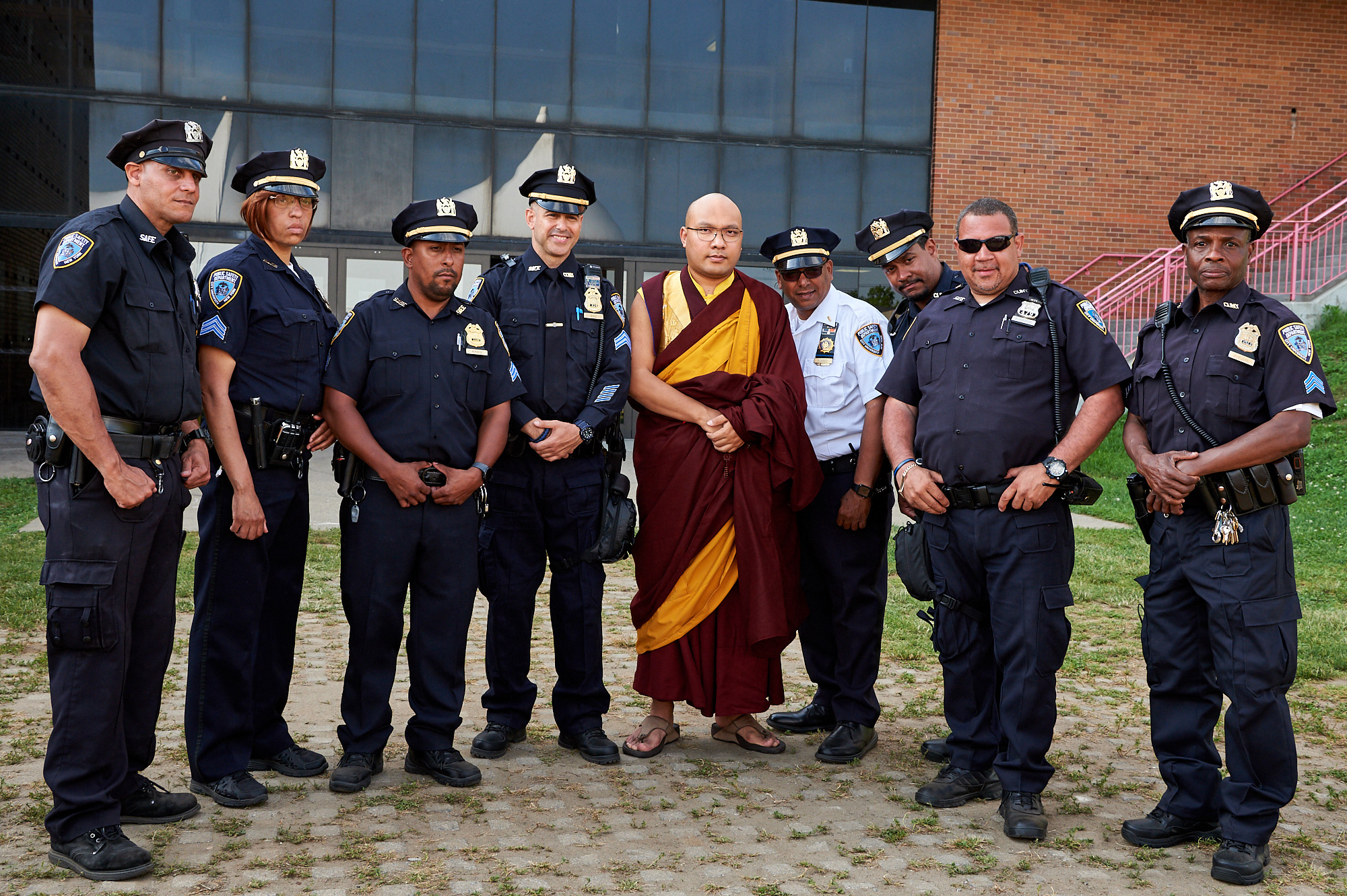
The monlam was attended by many Tibetan laypeople living in New York City, monks and nuns from North American Kagyu centers, Western practitioners, and followers from mainland China, Taiwan, and Hong Kong. Its location was selected in part because of its proximity to the Karmapa’s North American seat, Karma Triyana Dharmachakra in Woodstock and to the Danang Foundation in Queens, a charitable organization which is led by one of the organizers of the Karmapa’s daring 2000 escape from Tibet, Lama Tsewang Rinpoche.
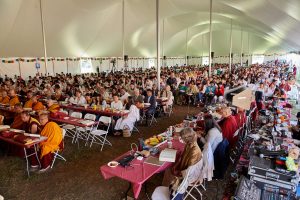
The prayer festival was a treat to practitioners from New York City’s large Tibetan population, many of whom reside in the Jackson Heights neighborhoods of Queens and have a large community center in nearby Woodside.
Tashi Drolma, 24, who grew up in Tibet and moved to America about five years ago, said that the Marme Monlam show helped her reconnect with her culture.
“Being here and hearing these singers from Tibet makes me very emotional. I remember these songs from when I was young, growing up in Tibet. This event reunites Tibetan people from Tibet and Tibetan people from around the world. We all come together in happiness.” She added, “It is beautiful that there are not only Tibetan people here, but all people who practice Tibetan Buddhism have come together to practice the religion.”
Correction (6/19): A previous version of this article claimed that this was the first monlam where all the chant leaders were women. This is not the case. Nuns in the Drukpa lineage have been the exclusive chant masters of the monlam known as Zangchod Boom for years.
